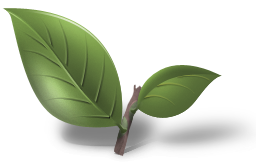For yancha connoisseurs, a small and fast pouring teapot is a must, because they like to brew their tea with very high ratios (15ml-10ml per gram) and high end yancha can be extremely pricey (upwards of 1 dollar per gram).
Some use teapots as small as 50-60ml! This comes in handy if you like to brew your tea "traditional chaozhou style" where you form a ball of crush/broken leaves in the teapot (whatever traditional actually means, as I've found out that people have very conflicting opinion on what is traditional GFC). More information on this style here:
https://www.kyarazen.com/chaozhou-gongfu-tea/
Though, a pot as small as 50-60ml suffers from heat retention problems, so for most the optimal size is 80-100ml. A round shape helps as well, which has the least surface area to volume.
Don't think the small size is a problem with Trad. CHZ style because the tea infuses so quickly it doesn't really matter. And again, a round shape is preferred for the "tea gall".
The reason why you want a fast pour is because otherwise the tea would become too strong, impacting your ability to taste subtleties. This is the reason why whiskey drinkers dilute their whiskey. The same concept can be applied to wine, coffee and tea.
Personally, realizing that this could apply to tea as well, I've brewed my tea way weaker than I would normally. The impact has been amazing! Oddly enough, the tea actually tastes stronger than with a thick brew, most likely because the aromatic compounds are "stuck" in the tea liqour. Aftertaste and mouthfeel are improved as well.
Personally, I don't agree with the general consensus of yancha drinkers. In my opinion, a flash brew with a lot of leaf creates a one dimensional tasting tea, and drinking a potful of tea that might even cost 6-10 dollars is very wasteful feeling. In my experience, you definitely don't need to brew yancha with high ratios.
And using too many leaves impacts the later steepings negatively as well (however this is advantageous in Trad GFZ), which can be as good as the first initial brews if you can appreciate them. A "traditionally" processed, aged and high roast yancha I've caved into drinking is amazingly consistent in the later steepings, providing 7 or so steeps that are all good as each other!
As far as clay pairing goes, I've found that my cheapo hongni shuiping sings best with yancha.
